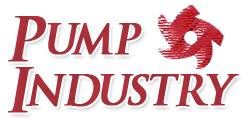Peristaltic Pumps

Peristaltic pumps, also known as hose pumps or tube pumps, are a type of positive displacement pump that use a squeezing action to transfer fluids. They are named after the peristaltic motion, which resembles the way the human digestive system moves food through the intestines. Peristaltic pumps are widely used in industries where precise and gentle fluid transfer is required. Here are some key features and components of peristaltic pumps:
- Pump Head: The pump head of a peristaltic pump typically consists of a circular housing or rotor with multiple rollers or shoes attached to it. The rollers or shoes squeeze a flexible tube or hose, creating a series of occlusions or compression points.
- Tubing or Hose: Peristaltic pumps use a flexible tube or hose to transport the fluid. The fluid is drawn into the tube when it is in the relaxed state, and as the rollers or shoes compress the tube, the fluid is propelled through the pump.
- Drive Mechanism: Peristaltic pumps are driven by a motor that rotates the pump head, causing the rollers or shoes to move along the tubing. The speed and direction of rotation can be adjusted to control the flow rate and direction of the fluid.
- Tubing or Hose Replacement: The tubing or hose used in peristaltic pumps is a replaceable component. When it wears out or needs to be changed, the old tubing can be easily removed, and a new one can be installed.
- Control Mechanism: Peristaltic pumps often have control mechanisms to regulate the flow rate and monitor the pump’s operation. This may include speed control, flow sensors, and displays for monitoring the pumping parameters.
Peristaltic pumps offer several advantages, including gentle pumping action, accurate dosing capabilities, self-priming operation, and the ability to handle sensitive fluids or fluids with particulate matter. They are widely used in applications such as laboratory and research settings, pharmaceutical manufacturing, biotechnology, food and beverage processing, wastewater treatment, and chemical dosing.
The choice of tubing material is important in peristaltic pumps, as it needs to be compatible with the fluid being pumped and the specific application requirements. Various types of tubing materials are available, including elastomers, thermoplastics, and reinforced hoses, each with its own set of properties and chemical resistance.
It is essential to properly select the tubing size, consider the fluid viscosity and flow characteristics, and ensure regular maintenance and inspection of the tubing to prevent leaks, blockages, or wear. Following the manufacturer’s guidelines and recommendations for tubing replacement and maintenance is crucial for the reliable and efficient operation of peristaltic pumps.
Related Links
Multiple keywords
pumpmanufacturer, pump, aoddpump, aodd, aoddpumps


